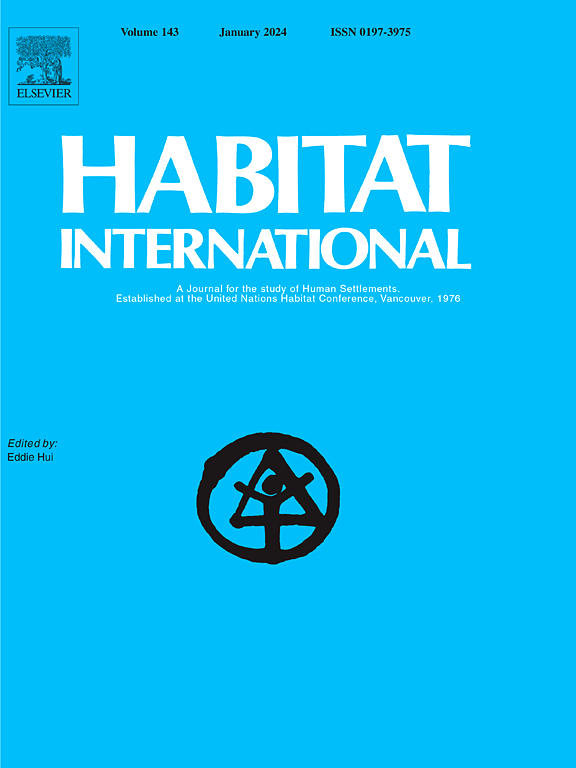农村居民日常活动-出行模式识别——以贵阳市为例
IF 7
1区 经济学
Q1 DEVELOPMENT STUDIES
引用次数: 0
摘要
农村交通是农村可持续发展和居民福祉提高的基石。了解活动-出行行为对于有效的农村管理和交通规划至关重要。已有研究对农村居民的具体活动环节和出行决策进行了探讨。然而,关于日常活动模式的清晰轮廓的知识有限。基于2021年贵阳市居民出行调查数据,采用序列分析方法(SAM)对贵阳市农村居民的活动和出行时间分配进行了研究,并确定了农村居民的日常活动-出行模式(DATPs)。从活动参与和出行行为的角度分析了各类datp的特征,并运用多项logit (MNL)模型探讨了datp与社会人口学属性之间的关系。本研究确定了DATP的六种类型:工作、学校、农场、社会、生活和家庭模式。具体而言,工作、学校和农场模式以生计活动为主,平均每天超过6小时,早晨和晚上出发高峰。社交圈的人会花更多的时间探亲访友,饭前和饭后的时间都是高峰。生活模式涉及更多与生活相关的服务,而居家组更多的是呆在家里和短时间的户外活动。此外,由于出行距离较长,工作和生活模式更依赖私家车,而其他DATP群体更喜欢步行。研究结果有助于更好地理解农村居民的日常出行模式划分,并制定适合农村居民出行需求的交通政策。本文章由计算机程序翻译,如有差异,请以英文原文为准。
Identifying the daily activity-travel patterns of rural residents: A case study of Guiyang, China
Rural transportation is a cornerstone for developing sustainable rural and improving resident well-being. Understanding activity-travel behavior is essential for effective rural management and transportation planning. Existing research has explored the specific activity segments and travel decisions of rural residents. However, there is limited knowledge about the clear profiles of daily activity patterns. Using the sequence analysis method (SAM) based on the 2021 Guiyang Household Travel Survey, we investigate rural residents' activity and travel time allocation and identify daily activity-travel patterns (DATPs). The characteristics of various DATPs are analyzed from the perspectives of activity participation and travel behavior, and the multinomial logit (MNL) model is applied to explore the association between DATPs and sociodemographic attributes. This study identifies six categories of DATP: Work, School, Farm, Social, Life, and Home patterns. Specifically, Work, School, and Farm patterns are dominated by livelihood activities, averaging over 6 h daily, with a morning and evening departure peak. The Social group allocates more time to visiting family or friends and exhibits the peak times before and after meals. The Life pattern involves more life-related services, while the Home group spends more on staying at home and short-duration outdoor activities. Moreover, Work and Life patterns rely more on private cars due to longer travel distances, whereas other DATP groups prefer walking. The results contribute to a better understanding of the daily pattern segmentation for rural residents and tailored transport policies to meet their travel demand.
求助全文
通过发布文献求助,成功后即可免费获取论文全文。
去求助
来源期刊

Habitat International
Multiple-
CiteScore
10.50
自引率
10.30%
发文量
151
审稿时长
38 days
期刊介绍:
Habitat International is dedicated to the study of urban and rural human settlements: their planning, design, production and management. Its main focus is on urbanisation in its broadest sense in the developing world. However, increasingly the interrelationships and linkages between cities and towns in the developing and developed worlds are becoming apparent and solutions to the problems that result are urgently required. The economic, social, technological and political systems of the world are intertwined and changes in one region almost always affect other regions.
 求助内容:
求助内容: 应助结果提醒方式:
应助结果提醒方式:


